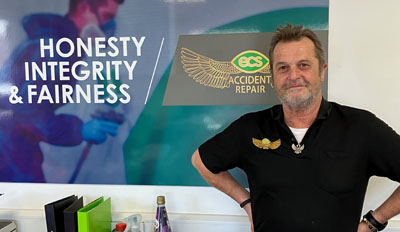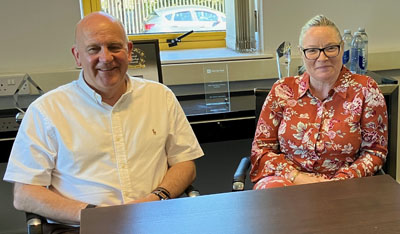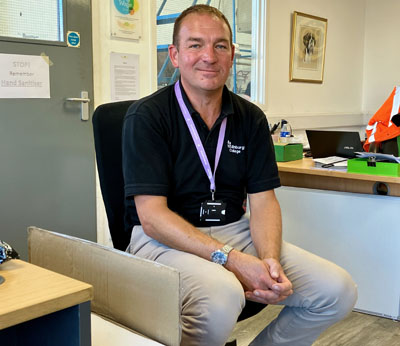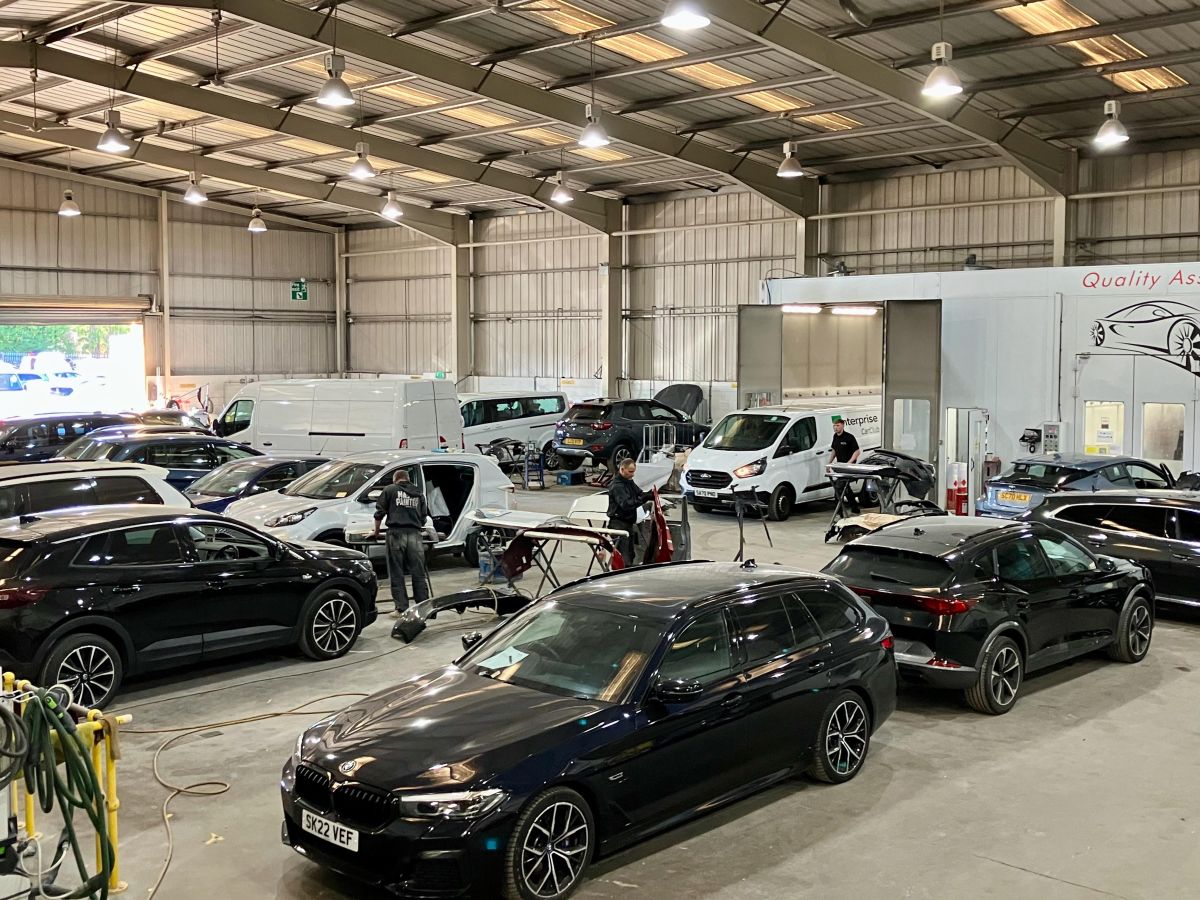The challenges faced by shop owner Martin Shiels of ECS Accident Repair in Edinburgh, Scotland, will sound familiar to U.S. shops. A body technician---one of two employed at the shop for more than 14 years---recently left, and Shiels was struggling to replace him while also getting an apprentice from the local college started within the shop. He is still working to get set up to repair electric vehicles, and still must sublet most ADAS work. Prior to Brexit, Shiels said, he could receive Volkswagen parts, for example, from Germany overnight; post-Brexit, truck drivers might sit for days to get through customs, or shippers wait until they had a full container, so parts delays have become common.

The shop handles insurance claims on a “non-approved basis,” which means Shiels can charge higher labor rates, about $67 (USD) per hour compared to about $48 paid to insurer-approved shop.
“We can demand that because of our [customer] reviews and so forth, people want to come to us, but the insurers will try to steer them, as they will do in the States as well,” Shiels said.
He’s baffled by other shops’ willingness to offer the steep parts, labor and materials discounts required for insurance approval or to join one of the collision repair franchise operations.
But there also are some key differences from the U.S. in day-to-day operations at ECS. Paying for Audatex estimating---which dominates the market there---and access to “the pipe” to communicate with insurers “isn’t viable for us,” Shiels said. “So what we do is we hire a contractor. When we have a damaged car, we’ll strip it, we’ll image it all up, and we'll send that on through an app. They will compile the Audatex estimate and send it down the pipe to the insurer. And they’re given parameters to do the negotiations for us.”
But differences aside, like most small business owners, Shiels said what’s most important to him is something listed prominently on a sign in the shop’s office: “Honesty, integrity and fairness.”
“It’s how we deal with people---staff and customers---that’s very important, to have an ethical standard,” Shiels said.

Not far from Shiels’ shop is QA Vehicle Solutions, where between the shop and massive back lot, nearly 700 vehicles are in some stage of the collision repair process. It’s a big change from the early days of the pandemic, when the shop was completely shut down, with all of its 54 employees sent home for two months.
The company is the largest single-site repairer for Enterprise Rent-A-Car in all of Europe---fleet work accounts for about 60% of the shop’s business---and that type of work “went right off the edge of a cliff” at the start of the pandemic, shop owner Alan Arthur said. It was an abrupt shut down for a business in just its third year at that time.
But the shop eventually brought all of its employees back. Today, tourism in Scotland is beyond pre-pandemic levels, and Arthur’s shop’s car count is as well.
“It’s a market we prefer compared with insurance,” he said of fleet work. “We don’t have to get involved in courtesy cars”---the replacement vehicles UK shops doing insurance work must provide for customers, often without compensation from the insurer---“and we don’t have individual clients with individual needs on individual vehicles. We deal with one fleet company.”
Cash flow is more challenging on insurance work as well, Arthur said, because invoices go through accident management companies that assign the work and process payments on behalf of the insurance companies.

Another key difference in the industry in Scotland compared to the U.S. is calculations for paint materials are most often determined through an Audatex system based on the size of the panels.
Aside from such differences, Arthur and his wife Elaine, who founded the company together in 2017, say the biggest challenge they have is the one most often cited by U.S. shop owners as well: staffing. Elaine Arthur said Thatcham, an insurer-funded vehicle research organization in the UK, has an academy the shop uses to help locate and train apprentices.
“They’re looking at how they can improve that apprenticeship program, to make it quicker to actually get kids through,” she said. “In this country, it’s a four-year apprenticeship. Whether you want to be a painter or a panel beater, the first two years you have to do both disciplines. Now if you’ve got a painter who’s really not interested in being a panel beater, you're lucky to keep them two years.”
She said the academy may put an assessment in place to allow students, once they get that certificate after 12 months, to specialize in either paint or body work.
Steven Frampton’s experience as an autobody instructor at Edinburgh College in Scotland also sounds quite similar to the challenges his counterparts in the U.S. face. The program has about 28 students enrolled, ages 16 to 31, as well as some apprentices sent into the program by shops that employ them.
But the school, like many in the U.S., struggles to get qualified students into the program, those who understand that body and paint work differs from mechanical, and aren’t just signing up because there aren’t other courses available or because they’ve been sent over by parents or career or social care workers who don’t understand the basic aptitudes needed. Framptom said he can’t understand why the pool of students coming into the program is so small.
“It is bizarre, because it’s probably the highest paid and most in-demand job [among the trades],” he said. “Still, the biggest drive for me is taking one of these kids from an entry-level course, getting them into the full program and then getting him into [a shop],” Frampton said.









